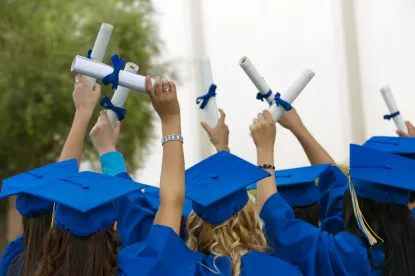Coming to the United States in order to attend an educational institution is oftentimes the first step foreign individuals will take on their long journey to fulfilling their American Dream. For example, a foreign student may enroll in a U.S. university, graduate, get a job here and be on their way toward permanent residence and, potentially, full-fledged citizenship. Foreign students are also attractive to universities due to the fact that they will usually have to pay their tuition in full as they generally do not qualify for public student aid assistance or in-state tuition discounts.
In 2016 there were 1.2 million foreign students in the United States; this represented a 6.5% increase over enrolled foreign students in 2015. Furthermore, recent data shows that international students pay up to three (3) times more than in-state students at public universities and finance a large segment of the education costs for universities’ domestic students. In 2015, public universities in the United States took in more than $9 billion dollars in tuition and fees from international students, which accounted for approximately 28% of annual tuition revenue. With foreign students making up on average just 12% of the student body population this is an extremely significant contribution to our educational system from abroad.
Following a decade-long trend of increase in foreign student applications, U.S. colleges and universities were poised for continued increase in foreign matriculation for the 2017-18 academic year. Then came President Trump’s executive orders on immigration. Specifically, within the first six (6) months of his administration President Trump signed two (2) executive orders affecting travel by foreign nationals. These executive orders—referred to colloquially as a “travel ban”—sought to prevent entry by foreign nationals to the United States from certain Middle Eastern countries perceived to be compromised by terrorism.
The fate of the controversial “travel ban” is very much in limbo; on June 26, 2017 the Supreme Court reinstated much of the President’s second executive order before hearing oral arguments on the merits during the October Term 2017. The Supreme Court’s decision means that the government can enforce the President’s travel ban against the class of foreign nationals mentioned in the order (refugees and citizens of 6 countries) who are abroad and have no connections - such as family, institutional or employment-based - to the United States. The Court indicated that foreign students attending U.S. universities will be exempt from the travel ban because of their connection to their U.S. universities.
Other recent executive orders potentially affecting foreign student admissions and prospects include the “Buy American, Hire American” executive order which mandated a review of the H-1B program. Oftentimes a stepping stone to permanent residence, the H-1B visa is extremely popular among international students as it gives many foreign graduates the ability to work legally in the United States for up to six (6) years for American employers after graduation. However, a statutorily imposed quota system on the H-1B visa—along with a months’ long adjudicatory backlog—is preventing American businesses from effectively employing the talent they need. By way of comparison, Canada has implemented a new program whereby work permits and temporary resident visas are given out to foreigners in as quickly as two (2) weeks in order to help “innovative companies” seek highly skilled workers.
Therefore, the uncertainties of current immigration policies are already having an effect; specifically, a post-“travel ban” study conducted by the American Association of College Registrar and Admission Officers found that approximately 40% of the educational institutions polled saw a decrease in the number of applications for admission by international students. This is a significant drop for such a short period of time, which could spell trouble on the horizon for international students and the American universities which welcome them.
What To Do
Despite these changes there are constructive steps that universities can take in order to assist their foreign student population. The first step in doing so is to understand that the motivation of many international students is the pursuit of the American Dream, or at least a temporary experience of America post-graduation. This means helping them secure proper visas and work permits during school and after graduation. In other words, universities need to show foreign students that they understand and care about what affects them most: their immigration to the United States. To that end, some steps universities can take are:
-
Authorizing more fields of study for Curricular Practical Training (CPT) employment (employment during school in the student’s field of study);
-
Maintaining friendly Designated School Officials (DSOs) and career development officials sensitive to obstacles facing international students;
-
Scheduling workshops and presentations by reputable immigration lawyers to keep their international student body informed on the law;
-
Referring students with visa questions or issues related to travel ban to competent immigration practitioners in your area selected based on reputation and willingness to answer emergency calls if need be from students affected by travel/ visa restrictions;
-
Being aware of and promoting entrepreneurial visa options for students (where sponsorship from US employer is not needed but visa status is rather based on entrepreneurial activity/ business ownership/ investment);
-
Providing incubator/ entrepreneurial workspace on campuses where private companies run by students or non-students can rent space, work on developing their startup and thus obtain H-1B cap-exempt visas due to work being performed at the university location and with a logical nexus to the university’s activities; and
-
Promoting to potential foreign students the university’s commitment to assisting such students with their immigration-related concerns (be it while in school, travel ban-related or otherwise).
American universities should do all they can to foster a welcoming environment for their international students in these uncertain times and remind them that they are an integral part of their entire student body as a whole. More so, taking the steps outlined above can also have a positive impact on foreign student admissions and ensuring that international students know that they are welcome and wanted on university campuses throughout the United States.





 />i
/>i

